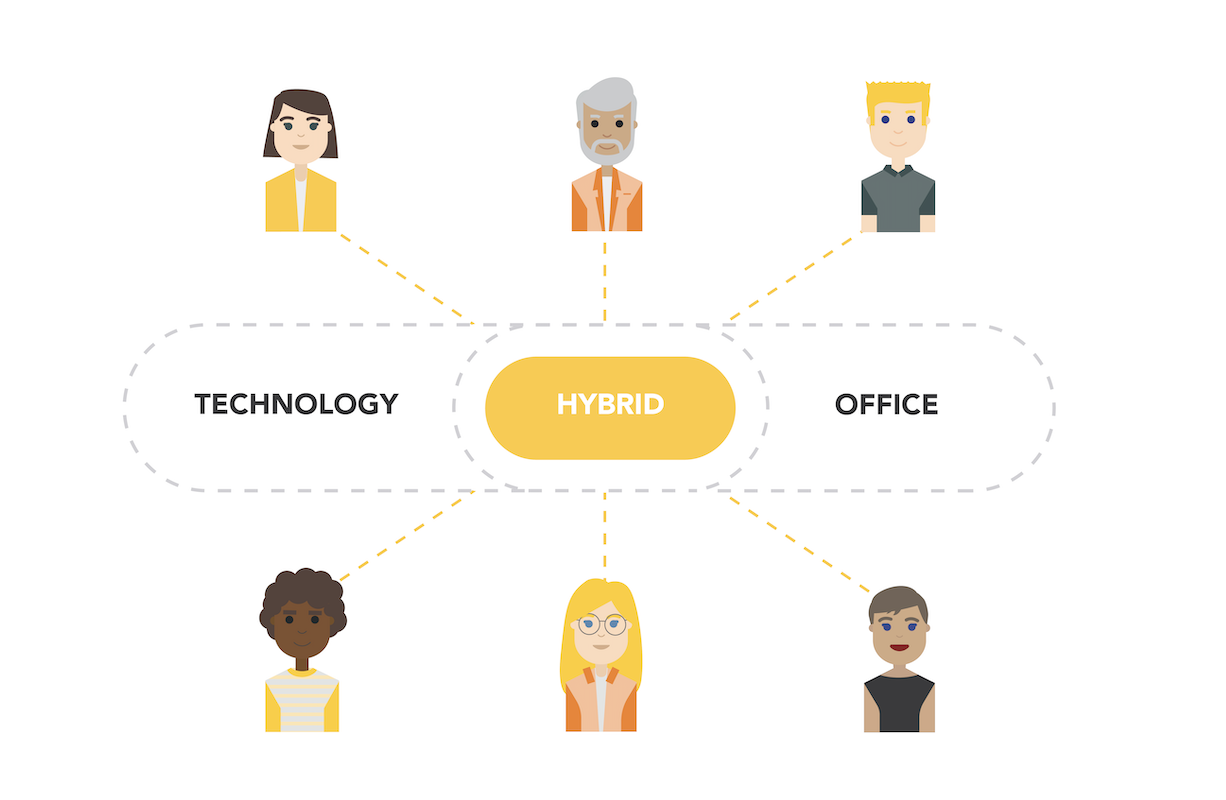5 Different Types of Teams for 2022
The way we work has changed across the last few years. It stands to reason then that the way we connect as teams is also evolving. What are the different types of teams that organisations need to think about in 2022?
By definition, a team is:
- ‘a group of individuals who collaborate on related tasks to achieve a common goal (https://pragmaticthinking.com/team-goals/).
Whether it’s reaching a sales target, an engagement metric, reducing safety incidences or delivering for clients, collaboration and teamwork are essential skills for any leader. Teams generally have a list of set activities to take part in that can define their team in relation to the organisation – think ‘design team’, ‘sales team’ and ‘operations team’.
Learning about how different teams operate is useful for anyone who might find themselves within a team (pretty much everyone). Science shows us that social interaction and teamwork contributed to our evolution as well as the size of our human brains. Isn’t that fascinating?
So, how do we team in 2022?
We first published a blog post about types of teams (https://pragmaticthinking.com/blog/types-of-teams/) a few years back, but our world has shifted dramatically since then. Now we see the emergence of quite specific team formations, particularly in a hybrid, work from anywhere context.
To find out more about the 5 different types of teams you’ll come across throughout your leadership work, read on.
5 Different Types of Teams
#1: Functional Teams
Functional teams are permanent and include members of the same department with different responsibilities. Often a leader or manager is responsible for everything ,and everyone reports to them. This is the typical top-down management approach that you’ll see in most organisations.
Traditionally functional teams have operated through a co-located approach, with the team being physically situated in a similar space within the office. In the new world of work, functional teams can be compromised of individuals who operate out of different locations, sometimes even different countries and time zones.
Across all organisational teams, it’s important to prioritise workplace culture; the foundations of which are feedback and coaching.
As a leader, to take your functional team to the next level, consider running a program in-house to improve feedback by giving your team the tools to give effective feedback without causing offense. Additionally, it’s a key functional teams skill to be able to ask key questions and coach each other (Coaching Mastery) through processes and outcomes to boost productivity and individual employee engagement.

#2: Cross-Functional Teams
Cross-functional teams are made up of individuals from various divisions or departments. These teams tackle specific projects that require different inputs and expertise. Imagine a transformation project or the launch of a new product. Individuals need to work together often for a specific period of time.
The key to effective cross-functional teams is being able to establish connection and build trust quickly. We know that with the Speed of Trust (link here) great work can be done. But it’s worth the investment of time and effort at the start of a project to outline ‘how’ we will work, not just ‘what’ we need to delivery.
The biggest challenge for cross-functional teams is breaking down ‘silo’ mentalities. It’s crucial that diversity of thinking and perspectives are encouraged and that individuals in the cross-functional team are working to their strengths.

#3: Self-Managed Teams
There are times when individuals may pull in expertise from different areas; thus forming a self-managed team. By definition there’s often not a manager or a leader, but a champion for the outcome the team is trying to achieve. It may be a team that are pulling together our Mental Health Awareness initiative across an organisation, and the team members have put up their hand to be a part of the initiative.
Generally, individuals in self-managed teams are employees of the same organisation who work together and the team is relatively autonomous and share responsibility. High-performing teams can often fall into this category.
People working in startups or small businesses may also find themselves in this type of team dynamic. It can be difficult for people who have worked in other types of teams for most of their career to adjust to this way of working, so there will likely be an adjustment period of sorts as ownership and navigating interpersonal issues if they arise.
It’s crucial that self-managed teams know how to deliver feedback and have tough conversations with tact. Without high levels of communication, trust, autonomy and mutual respect, self-managed teams will find it difficult to thrive. It can become ‘easier to do it myself’.

#4: Distributed Teams
Distributed teams are made up of individuals who work in separate physical locations and who use technology and collaboration tools to achieve a common goal. There is no ‘head office’ or shared space they come to.
Although much press is dedicated to the concept of work from anywhere, the fully distributed team remains a rarity but will become much more common in the future of work. One of the key features of distributed teams is ‘asynchronous’ method of working – tools and resources support individuals to do the work they need to do at a time that suits them, and then ‘hand over the baton’ to others in an effective and clear way. You may even have a few remote team members in your organisation right now who need to collaborate within a functional or cross-functional team.
It’s important for distributed team members to be involved from a cultural perspective within your organisation. Having face to face video calls and giving your team members the opportunity to connect on a personal relationship level will help to improve rapport and morale. We’ve already shared a bunch of info on creating a strong remote team culture, so give that a look when you have a moment.

#5: Hybrid Teams
Hybrid teams are made up of individuals who work in a variety of locations; both co-located and remote. Similar to Distrubuted teams, they rely heavily on technology and collaboration tools, but also find time to connect in person on a semi-regular basis.
Most credible data focusing on employee needs and desired work experience leans heavily towards a Hybrid team dynamic. People want the occasional and valuable connection with their peers, but value highly the opportunity to exercise autonomy and free choice to set up their work days without the reliance on traditional work hours and work spaces.
Many hybrid teams focusing on the best possible performance have to make very intentional use of their time and task. How, what and why do we gather? What work works best remotely? We answer these questions, and many more in our book Work From Anywhere (BTW it was the first publication printed internationally post-pandemic doing a deep dive on Hybrid team excellence)

Did you find this article useful? Be sure to share it with a fellow leader or manager directly or better yet, give it a share on LinkedIn.
If you’d like to explore the topic of team dynamics further, we’d recommend taking a look at our article on how to turn your dysfunctional team into an effective team, it’s a cracking read.


